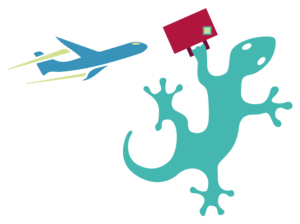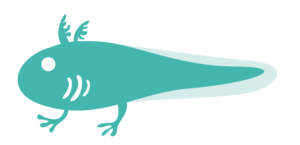The diagnosis
Our adventure into the world of scientific research and progeria began in 1998 after months and months of inconclusive visits, when Laura and Amerigo discovered that their son Sammy, who was just over two years old at the time, had Hutchinson-Gilford Progeria.
That still very rudimentary genetic examination - one thinks that only three years later the human genome would be mapped - was a real cold shower for the two parents. Despite the various health problems that had affected Sammy almost from birth, they thought they had a completely healthy son. After listing precisely what would be the symptoms of the disease, the difficulties they would experience and what future they would face, the doctors said one last sentence, which sounded more like a sentence:
“We are sorry, there is nothing to be done, the disease is too rare, there is no research... let your son live as best you can.”
And they were right: although the internet was not yet the all-encompassing search engine of today, there was no information to be found on this very rare disease, nor did any doctor seem to know anything about it, let alone how to deal with it.
First meetings with families
Despite the discouragement that such a diagnosis brings, Laura and Amerigo did not give up and continued searching until they found an ad from Audrey Gordon, from the United States, who was trying to find out more about the disease her nephew was suffering from: just progeria.

And so it was that, still lost but hopeful, in 2000 Laura, Amerigo and Sammy embarked on their first trip to the USA, where twenty or so progeria cases and their families had gathered to spend a few days together and, above all, to exchange useful information on how to cope with such a disease.
It was there that Laura, Amerigo and Sammy first met Leslie Gordon, Scott Berns and their son Sam Berns. Both involved in the medical field, only a year earlier in 1999 they had founded the Progeria Research Foundation (PRF), the only association then in existence that aimed to initiate research that would provide answers but above all find a cure for progeria.
 First discoveries and birth of the association
First discoveries and birth of the association
In 2003 an unexpected turning point: the team that PRF had gathered around it had identified the gene and its specific mutation that causes progeria, placing the disease in the large group of laminopathies.
And so it was that in 2005 Sammy's family, together with a group of friends, founded the Associazione Italiana Progeria Sammy Basso (A.I.Pro.Sa.B.) to support PRF and to try to raise interest in progeria in Italy too. Since its very first steps, the association has aroused the interest of the public as well as local and national newspapers and television networks, but also at a scientific level, where various researchers have begun to request the presence of the association in order to give scientists an insight into direct experience of living with progeria.
First Clinical Trials
Just one year later, thanks also to A.I.Pro.Sa.B.'s contribution, PRF was able to offer an initial group of 28 patients, including Sammy, an experimental drug: Lonafarnib (see the section on ongoing trials and promising research) aimed at slowing down the progression of progeria. These 28 first boys were followed by many more as the results became more and more promising.
In 2009, Lonafarnib was joined by two other drugs, pravastatin and zoledronic acid, starting a second clinical trial.
Birth of the Italian Laminopathy Network
Also in 2009, as part of a European project on the comparative study of laminopathies, A.I.Pro.Sa.B. came into contact with scientists interested in continuing this project and immediately discovered a commonality of intent. Thus, together with various researchers and teams from various Italian centres, A.I.Pro.Sa.B. co-founded the Network Italiano Laminopatie (NIL, see the entry Network Italiano Laminopatie) based at the IGM-CNR in Bologna. Laura, Amerigo and Sammy are part of the board, in which A.I.Pro.Sa.B. is supporting a general and specific study of laminopathies (diseases caused by defects in the nuclear lamina of which progeria is a part) together with specific projects concerning the basic study of progeria.
First Italian meeting
In 2012, with the aim of becoming increasingly international and supporting strong collaboration between the various researchers in the world who are interested in progeria, A.I.Pro.Sa.B. organised the first European meeting of families with progeria in Italy.
On the strength of the experience of meeting families made both in the United States at world level (and organised by the Sun Shine Foundation) and the experience made in the same way in Europe thanks to the Progeria Family Circle, during this week the various families with sons and daughters with progeria were able to enjoy a week together and in addition to experiencing the beauty of Italy, they were able to exchange data, ideas and advice, without forgetting the healthy fun offered to children and young people with progeria.
In conjunction with the family meeting, the association organised the world's first scientific meeting in Italy, where leading experts from all over the world gathered to share their unpublished data and exchange views on the future of their research. It was during this occasion that Leslie Gordon, the scientific coordinator of the PRF, decided to share with European families the data on the first clinical trial (with Lonafarnib) and the impact it had in children with progeria in general and in individual patients.
A.I.Pro.Sa.B.'s commitment
A.I.Pro.Sa.B. has become day by day more and more a point of reference for families with progeria in Europe and worldwide, assisting the PRF in its task of giving correct information, guiding families during daily life and during the medical needs that unfortunately in boys with progeria can be frequent and much more dangerous.
A.I.Pro.Sa.B. is committed to constant dissemination work and more and more people and groups interested in the history of the association and progeria are organising conferences, meetings and scientific seminars. In the same way, many students from schools to universities are turning to A.I.Pro.Sa.B. to bring progeria as a topic for term papers and dissertations, thus making progeria increasingly present in the Italian and foreign academic world.
The association is committed to the NIL board to team up with researchers and other patient associations to give a voice to these very rare diseases, the Laminopathies, and to encourage international cooperation and the interest of governments in funding research, the only hope for real progress towards a solution. Over the years, constant help has been given to the Network to organise and finance scientific meetings every two years in Europe and support in projects to make the working method increasingly effective as well as widespread in other countries.
Media and scientific information
In the media, the association is recognised as a source of clear and accurate information, not only about progeria, but also about what surrounds research and science in general: scientific disclosure done critically and seriously, without looking to sensationalism, is one of its strengths. This obliges one to always stay up-to-date and study, while maintaining an appropriate caution in disclosing even sensitive topics in the right way.
This was evident at the time of the Covid19 pandemic, when the association lent its knowledge to the general public, to stimulate critical thinking in the population by doing everything possible to avoid erroneous behaviour and to make citizens increasingly aware of the rules to follow in order to counter the contagion. Soon came the collaboration with the ViralVeneto project, promoted at a regional level but with a national impact, to make information more and more usable. In the same context, the research on progeria carried out by the NIL was found to be a very valuable source of information, linking progeria and the inflammatory process, which has been shown to be one of the major problems associated with Sars-Cov2 infection. These acquired skills were of fundamental support to the PRF, which was reasoning about the indications to be given to the various families to protect or treat patients with progeria who had contracted the infection or in the decision to approach the vaccine or not, taking advantage of all the information that Italy was providing as the first western country to face Covid19.
Final objective
For all these reasons, and for the seriousness combined with the sympathy with which the objectives were pursued, A.I.Pro.Sa.B. has received several awards over the years for its research and dissemination activities. Sammy has been recognised with the EURORDIS Young Patient Black Pearl Award, the Cavalierato al Merito della Repubblica Italiana and the role of International Ambassador for PRF.
Despite many years of experience and despite the research that has been carried out, there is still a long way to go, more than that, but with everyone's help it can be done:
WE WANT TO AND WE CAN, TOGETHER WE WILL FIND A CURE!
